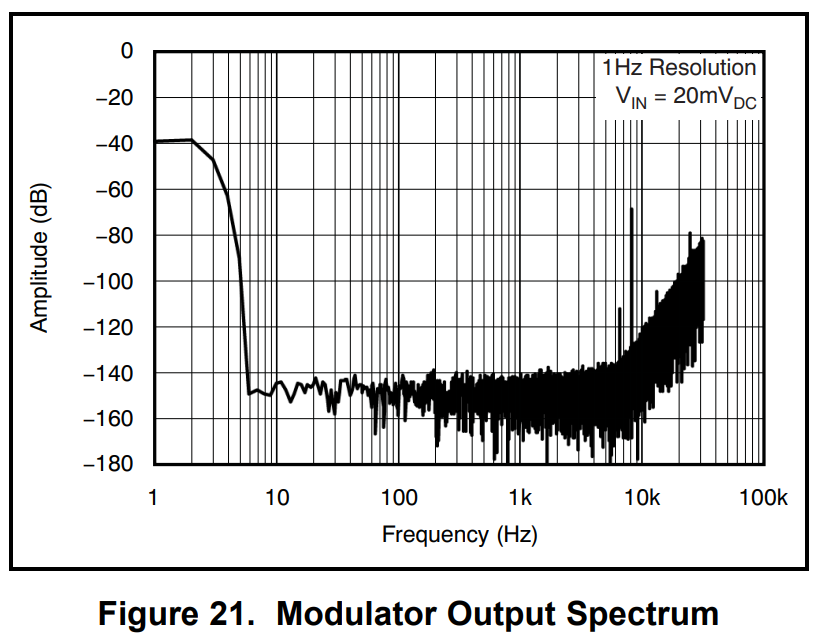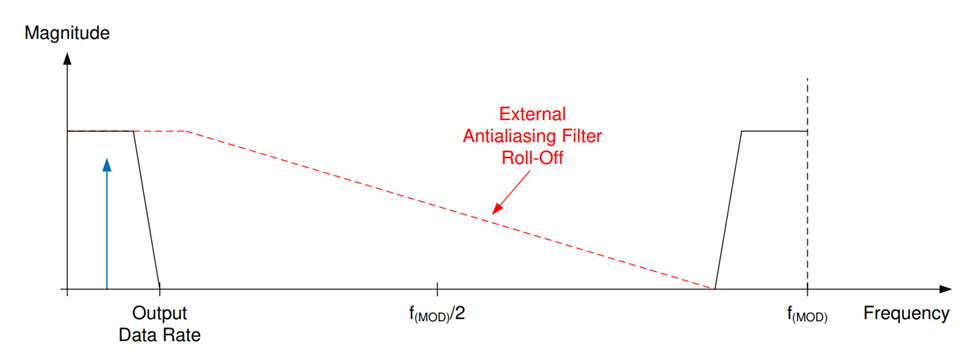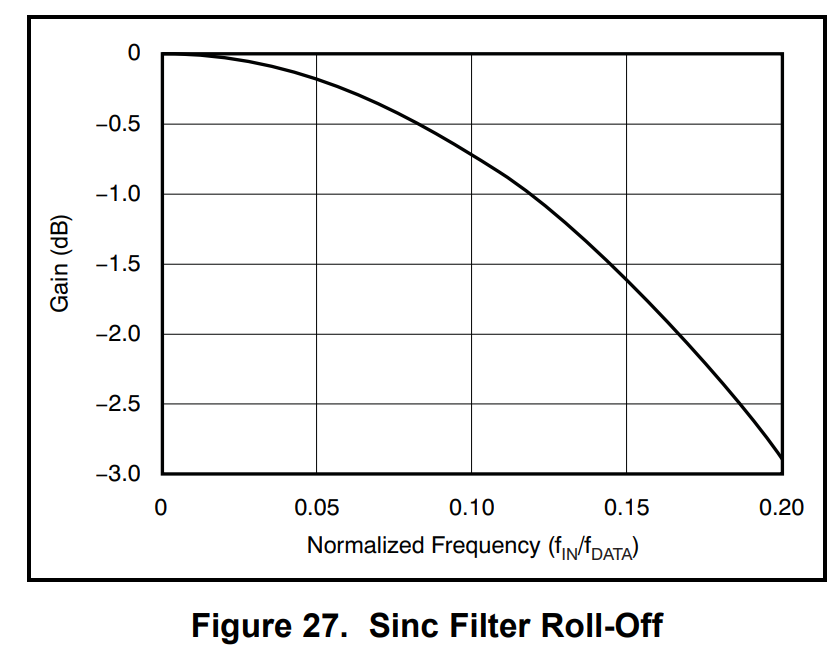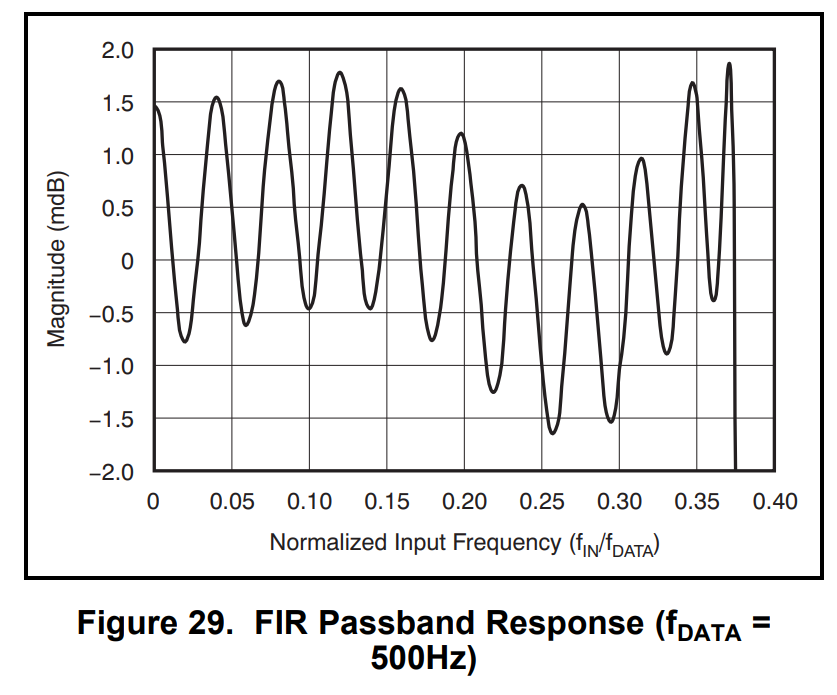- Ask a related questionWhat is a related question?A related question is a question created from another question. When the related question is created, it will be automatically linked to the original question.
This thread has been locked.
If you have a related question, please click the "Ask a related question" button in the top right corner. The newly created question will be automatically linked to this question.
Hi Team, seeking your assistance.
I want to ask a question about ADS1281's digital filter feature. I've read the datasheet, where I learned from the 'Electrical characteristics' that the -3dB cut-off frequency of the FIR filter is 0.413x fdata. But according to Figure 21, it seems that the delta-sigma modulator has a much lower cut-off frequency less than 10Hz. Please tell me how to understand that? Is that means the frequency of my input signal should below 10Hz?
The second question is that I've learned that the digital filter structure is a 5th order Sinc filter followed by an FIR filter. So the '-3dB cut-off frequency of the FIR filter in 'Electrical characteristics' means the overall bandwidth of the Sinc + FIR filter or only means the FIR stage?
Thank you.
-Mark
Hello Mark,
According to Figure 21, it seems that the delta-sigma modulator has a much lower cut-off frequency less than 10Hz. Please tell me how to understand that? Is that means the frequency of my input signal should below 10Hz?

The purpose of Figure 21 is to illustrate the noise shaping done by the modulator, not illustrate bandwidth. With that being said, most quantization noise or noise shaping output spectrums will have a bump around DC as a result of DC offset or measuring equipment limitations. Given the resolution of the measurement of the measurement is 1Hz, I have no doubt in my mind this is the result of the equipment. Another tip off is the 1Hz bump is around -40dB; an ADC that attenuates signals in the "pass-band" would a be pretty bad ADC.
In the context of bandwidth (BW) for a Delta-Sigma, my recommendation is to always imagine the figure below.

We know, there's a high frequency clock that's oversampling (f_mod), half the frequency is the nyquist (f_mod/2) and the oversampling ratio will decimate the modulator output to a data-rate down far below half the modulator frequency. Then, a bunch of filters are applied so that the effective bandwidth is somewhere around the data-rate but below the data-rate.
In general, if the designer decides to use the raw modulator output from the ADC and skip using our filters, they need to know something about when this noise starts to creep back up in magnitude. It helps them design filters to manage this noise. If you plan on using the SINC and FIR, you won't have to worry much.
The second question is that I've learned that the digital filter structure is a 5th order Sinc filter followed by an FIR filter. So the '-3dB cut-off frequency of the FIR filter in 'Electrical characteristics' means the overall bandwidth of the Sinc + FIR filter or only means the FIR stage?
Here's the specification for anyone that reads this later:

Let's take a look at the two "roll-off" graphs for the SINC and FIR filters, note the mdB vs. dB between the FIR and SINC:


As you might have noticed, the SINC filter reaches the effective -3dB bandwidth quicker than the FIR filter so we can be confident that the FIR filter -3dB bandwidth specification is just the FIR filter.
Doing some modeling, you should be find out the exact frequency response of both of these filters together. Some designers might say 0.2*f_data is the effective bandwidth, which is fine in the context of the intended device's end equipment, Energy Exploration and Seismic Monitoring where things don't need to be too high-bandwidth (i.e. the earth doesn't move very fast). Some designers might correct for 5th order SINC filter with digital gain, and then rely on the FIR filter to push out the bandwidth a bit.
Best,
-Cole